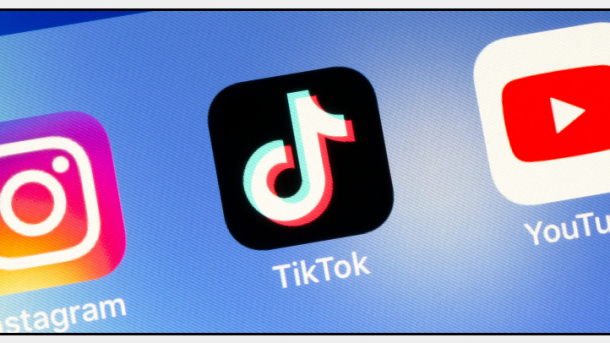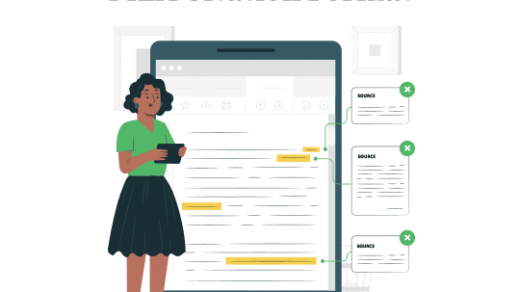In the past decade, social media has transformed not only how people communicate but also how knowledge circulates. Platforms such as YouTube, TikTok, and Instagram now shape the way students and researchers access, interpret, and share information. What once required books, journal articles, or television broadcasts is now condensed into short videos, digital posts, and reels. Yet when these materials appear in academic essays, students often struggle to cite them correctly. The Modern Language Association (MLA), known for its flexible approach to citation, has adapted its guidelines to the new digital ecosystem. The MLA Handbook, 9th edition, and its 2025 updates explicitly include recommendations for citing social media and user-generated video content.
In the contemporary research landscape, understanding how to document digital media is not a trivial matter of formatting. It is a reflection of how academic writing recognizes new kinds of authorship. A TikTok creator who condenses complex social commentary into a one-minute clip or an Instagram artist who publishes visual essays through images contributes meaningfully to public discourse. Acknowledging such work through proper citation ensures that the digital author receives due credit and that academic integrity remains consistent across media forms.
MLA’s approach to online materials rests on a few principles. Every source, no matter how unconventional, should identify an author or creator, a title or description of the work, a container or platform, a publication date, and a location, which for digital sources means a URL or link. These same principles can be extended seamlessly to YouTube videos, TikTok posts, and Instagram content, though each platform presents its own challenges. What follows is an in-depth guide to applying MLA style to these forms, with practical examples and commentary designed for students who increasingly rely on visual and social sources.
Applying MLA to YouTube, TikTok, and Instagram
The first step in citing social media is to identify who counts as the “author.” In many cases, the creator’s real name is known and used publicly, as with educational YouTubers or professional artists on Instagram. In other cases, particularly on TikTok, the creator is known only by a handle or username. MLA allows either form. If both are available, the real name is given first, followed by the username in brackets; if not, the handle alone serves as the author.
Titles are usually easy to locate on YouTube, where each video carries an explicit title supplied by the uploader. On TikTok and Instagram, titles are rare; instead, the caption, or the first few words of it, serves as the title and is placed in quotation marks. The platform’s name—YouTube, TikTok, or Instagram—is treated as the container and italicized. The publication date is taken from the timestamp that appears with the post or video, while the URL provides the digital location.
A complete citation for a YouTube video might read as follows:
Rivers, Anna. “How Climate Change Affects Coastal Cities.” YouTube, uploaded by GlobalScienceChannel, 12 June 2024, https://www.youtube.com/watch?v=ABCDEF12345.
The in-text citation simply uses the author’s surname: (Rivers). If there is no identifiable author, the channel name can be used in both the entry and the citation, as in (“Quantum Computing for Beginners”).
TikTok follows the same principle, though posts tend to have brief captions. An appropriate entry could look like this:
Chen, Lily [@lilychen123]. “Urban gardens in micro-spaces #cityfarming.” TikTok, 5 May 2025, https://www.tiktok.com/@lilychen123/video/9876543210.
For an Instagram post, the pattern remains consistent:
Lee, Jonathan [@jonleeart]. “Sunset over the Seine #Paris #travel.” Instagram, 15 Mar. 2025, https://www.instagram.com/p/AbCDeFgHiJk.
The elegance of MLA lies in this adaptability. By treating every source as a variation on the same core structure—author, title, container, date, location—the system can accommodate even ephemeral digital forms. It recognizes that a post can be a “publication” and that a video uploaded to YouTube is as much a work of authorship as a printed essay.
To illustrate the continuity among platforms, the table below summarizes the typical MLA patterns for three major social media types.
| Source Type | Works Cited Format | Typical In-Text Citation |
|---|---|---|
| YouTube Video | Creator Last, First. “Title of Video.” YouTube, uploaded by Uploader, Day Month Year, URL. | (Last) or (“Title”) |
| TikTok Video | Creator Last, First [@handle]. “Caption or first words.” TikTok, Day Month Year, URL. | (Last) or (@handle) |
| Instagram Post | Creator Last, First [@handle]. “Caption or first words.” Instagram, Day Month Year, URL. | (Last) or (@handle) |
The table helps clarify that MLA treats all digital platforms in a unified way. The only variations concern how titles are drawn from captions and how handles are incorporated.
Common Problems: Missing Data and Unstable Sources
While the principles are simple, the practice of citing social media can be messy. Students often face posts with no author, undated videos, or content that disappears. The most frequent obstacle is the absence of a clear personal name. In such cases, MLA recommends beginning the entry with the username or handle. A citation that begins “@ecoartist” is entirely acceptable. Within the text, the same handle appears in parentheses: (@ecoartist). If both a real name and handle are known, including both increases clarity.
Dates can also pose difficulties. A YouTube video typically includes a full upload date, but Instagram sometimes provides only a month and year, and TikTok posts can show relative time (“3 weeks ago”). When an exact date cannot be determined, the writer can use the most precise form available—“Mar. 2025” or simply “2025.” If the date is completely absent, the abbreviation “n.d.” (for “no date”) replaces it. Although MLA 9 no longer requires “Accessed” dates, they remain useful for unstable or frequently changing content. Including a note such as “Accessed 5 Oct. 2025” can be helpful for readers who might otherwise find a broken link.
The impermanence of online media also raises ethical questions. A TikTok video may be deleted or altered after publication. When citing volatile content, it is good practice to record the date of access and, when possible, save a link to an archived version through the Internet Archive. If a screenshot or downloaded copy is used for analysis, the essay should mention that fact, treating it as a private copy derived from the cited post. Such transparency reinforces academic honesty in an environment where sources can vanish overnight.
Another subtle issue arises from the brevity of captions. Because TikTok and Instagram often feature posts with minimal text, the title in a citation can appear awkwardly short. MLA’s solution is to use the first few words of the caption, followed by an ellipsis if necessary. For example, a post beginning “When art meets AI…” can be shortened to “When art meets AI…” without the full caption. The same principle applies to long YouTube titles; clarity matters more than exact replication.
Alphabetization, consistency, and formatting are also vital. In the Works Cited list, entries are arranged alphabetically by the first element—usually the creator’s surname or handle. Hanging indent is applied to each entry, and punctuation follows MLA norms. Students often forget to italicize the platform name or to place the video title in quotation marks. Such details may seem trivial, but they ensure coherence and professionalism across academic writing.
When information is uncertain or incomplete, MLA favors transparency over perfection. It is better to supply a partial but honest citation than to omit a source altogether. A student may write: “Because the author’s full name is not listed, this citation uses the account handle provided by TikTok.” Such clarification, even informally within the essay, demonstrates integrity.
Why Proper Social Media Citation Matters
Beyond mechanical correctness, citing YouTube, TikTok, and Instagram has intellectual significance. It signals that scholarship acknowledges the legitimacy of new forms of knowledge production. A YouTube documentary or an Instagram artist’s visual narrative can convey insight comparable to that found in traditional media. Proper citation integrates these voices into the academic conversation and prevents the erasure of digital authorship.
The inclusion of usernames in brackets—such as “Lee, Jonathan [@jonleeart]”—bridges real and digital identities, a subtle reminder that the online persona is a valid form of authorship. This dual recognition helps students respect both privacy and professionalism. It also teaches critical literacy: a handle is not always equivalent to a verified author, and responsible writers verify creators before citing them.
In practical terms, the updated MLA guidelines simplify research. By using a single adaptable framework, writers no longer need special rules for each platform. The same citation logic applies whether the content is a YouTube lecture, a TikTok social commentary, or an Instagram photograph. This harmonization saves time and reinforces consistency across papers.
At a deeper level, the shift toward social media citation reflects how information ecosystems have evolved. The 20th-century scholar worked primarily with printed text; the 21st-century student interprets multimedia. By codifying ways to cite digital artifacts, MLA acknowledges that meaning is now distributed across video, sound, image, and text. In this sense, learning to cite an Instagram post is not merely a bureaucratic exercise but a lesson in digital literacy and media ethics.
For students, this practice cultivates responsibility. Copying a meme or embedding a TikTok clip without credit may seem harmless, yet it disregards the creator’s labor and intellectual property. MLA citation thus functions as an ethical tool that connects classroom writing to the broader world of creative production.
Conclusion: Toward a Culture of Digital Academic Integrity
As digital media becomes the default language of young generations, the ability to cite it properly becomes part of academic fluency. YouTube lectures, TikTok explainers, and Instagram portfolios all contribute to the landscape of ideas. The 2025 MLA guidelines, drawing on the 9th edition’s flexibility, provide students with a stable yet adaptable method for recognizing these contributions.
The essential principles remain timeless: identify the creator, describe the work, name the container, record the date, and supply the link. Whether a work appears on paper or in pixels, those five elements establish authorship and traceability. The table presented earlier demonstrates that these rules translate smoothly across social media, requiring only minor adjustments in how titles and handles are formatted.
Students who master this form of citation not only avoid plagiarism but also learn to treat online creators as peers in knowledge creation. By writing “Chen, Lily [@lilychen123]” instead of simply pasting a video link, they acknowledge an individual voice behind the screen. By including a date and URL, they invite readers to verify and engage with the same material. And by maintaining consistency in punctuation and style, they show that digital culture deserves the same rigor as traditional scholarship.
In an age where the line between user and author blurs, MLA’s adaptability ensures that every contribution—whether a scholarly article or a viral post—can be traced, credited, and discussed responsibly. The act of citation becomes not just a technical requirement but a gesture of respect toward the diversity of media that now shapes human understanding.
By recognizing YouTube, TikTok, and Instagram as legitimate sources, educators affirm that learning takes place across platforms, and students discover that academic writing can embrace the language of their time. To cite well is to think critically about where information comes from and to acknowledge that even a thirty-second clip can hold scholarly value when treated with intellectual honesty. The MLA format, evolving through 2025 and beyond, thus remains not a constraint but a bridge—connecting academic tradition with the creative pulse of digital life.




